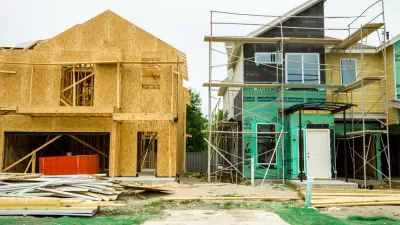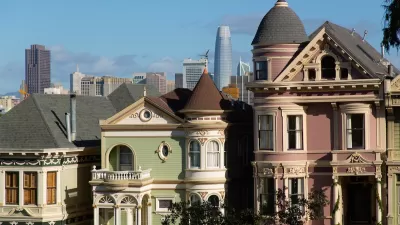In the three steps of placemaking, crafting a meaningful vision is the first and most straightforward, yet it's the most under-leveraged. Continuing his series on "Municipal Placemaking Mistakes," Nathan Norris describes how to get it right.
Rarely do communities fully appreciate the political implications of articulating a collective local vision. So they don't invest in the heavy lifting required to create a meaningful vision.
Norris goes into tools for visioning: Multiple Scenarios, Comparitive Impact Analysis (Economic, Environmental, Health, Visual, Freedom/Access), and Non-NIMBY Empowerment. And offers up some encouragement:
"Going through the hard work of producing a meaningful vision gives politicians the political cover to safeguard it. For example, if a politician’s major campaign contributor happens to be a developer who is seeking to develop property in a manner that violates the community vision, do not count on that politician to employ the courage to push back. On the other hand, the politician is substantially more likely to exercise some backbone if he or she can explain to the developer the level of support that the vision has, and that there are reports that say that the vision will be better economically, environmentally and visually while improving the health of the citizens."
FULL STORY: Municipal Placemaking Mistakes 03: The Importance of a Meaningful Vision

Maui's Vacation Rental Debate Turns Ugly
Verbal attacks, misinformation campaigns and fistfights plague a high-stakes debate to convert thousands of vacation rentals into long-term housing.

Planetizen Federal Action Tracker
A weekly monitor of how Trump’s orders and actions are impacting planners and planning in America.

San Francisco Suspends Traffic Calming Amidst Record Deaths
Citing “a challenging fiscal landscape,” the city will cease the program on the heels of 42 traffic deaths, including 24 pedestrians.

Defunct Pittsburgh Power Plant to Become Residential Tower
A decommissioned steam heat plant will be redeveloped into almost 100 affordable housing units.

Trump Prompts Restructuring of Transportation Research Board in “Unprecedented Overreach”
The TRB has eliminated more than half of its committees including those focused on climate, equity, and cities.

Amtrak Rolls Out New Orleans to Alabama “Mardi Gras” Train
The new service will operate morning and evening departures between Mobile and New Orleans.
Urban Design for Planners 1: Software Tools
This six-course series explores essential urban design concepts using open source software and equips planners with the tools they need to participate fully in the urban design process.
Planning for Universal Design
Learn the tools for implementing Universal Design in planning regulations.
Heyer Gruel & Associates PA
JM Goldson LLC
Custer County Colorado
City of Camden Redevelopment Agency
City of Astoria
Transportation Research & Education Center (TREC) at Portland State University
Jefferson Parish Government
Camden Redevelopment Agency
City of Claremont




























